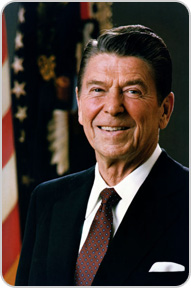
Theme 2: Taxes in U.S. HistoryLesson 6: Tax Reform in the 1960s and 1980s

Since the 1940s, the tax code has grown very complicated as tax deductions, tax exemptions, and tax credits were implemented. This protected certain groups and businesses from too much taxation, but meant the loss of tax revenue for the government. The government saw no need to change the basic tax structure or the tax rates as long as inflation and economic productivity provided revenues lost to tax credits and exemptions. When revenues threatened to fall short--creating a deficit--the government usually responded by cutting spending.
In the 1960s, the economy began to slow down. By 1969, it was clear that the tax code had to be adjusted. The Tax Reform Act of 1969 required high-income earners and corporations to pay their fair share of taxes. The Act also offered tax cuts that lowered the tax rates for individuals and increased tax exemptions for the lower-income groups. By the mid-1980s, the complicated tax code allowed wealthy people and companies to use loopholes to protect their money from taxation. The Reagan administration hoped to pump money back into the economy by introducing tax cuts and simplifying the tax structure. The Tax Reform Act of 1986 reduced the amount of money owed by the wealthy. The government hoped to encourage them to pay taxes and also hoped that the wealthy would invest their money in a way that would eventually benefit all workers and taxpayers. |
materials:Activities
Activity 1: Tax Reforms of 1969 and 1986 Complete a cause and effect chart for the Tax Reform Acts of 1969 and 1986. Activity 2: How Much Did We Pay? Take a virtual field trip to find out how much of taxpayers' incomes was paid in taxes in the 1980s, a time of tax reform. Activity 3: Tax Your Memory Play a game of memory and concentration. Assessment
Complete the assessment page to test your understanding of Tax Reform in the 1960s and 1980s.
Links
To learn more about how the government's use of taxes has shaped the economy in U.S. history and in times of crisis, visit:
Theme 2, Lesson 4 and Theme 2, Lesson 5.
|
| quick check |
|
How did the Tax Reform Act of 1986 affect the wealthy?
|
| tax trivia |
|
Did You Know?
The Reagan administration introduced new words and phrases to describe the government and its economic policies. For example, the era from 1980 to 1988 is often referred to as the "Reagan Revolution."
Test your tax trivia knowledge by answering the multiple-choice question. Click on the correct answer. To assess your answer, click the Check My Answers button. |
